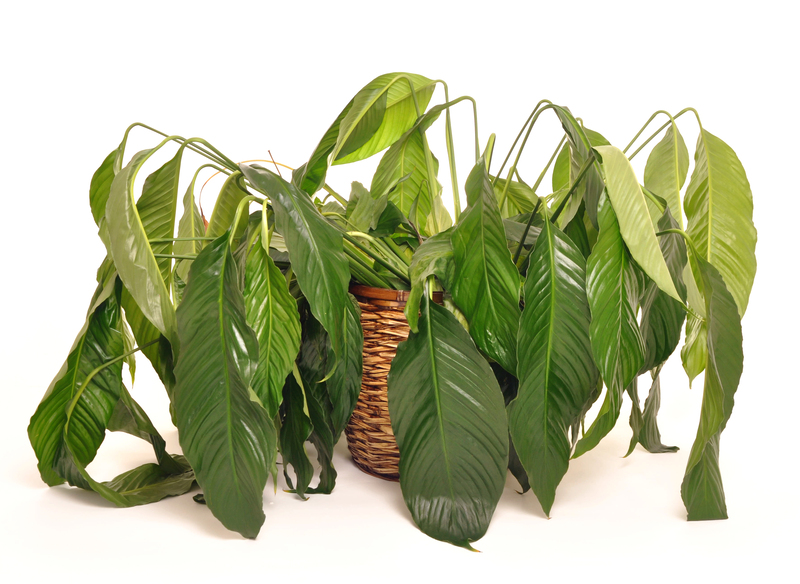Lush Greenery and Blooms Ideal for Compact Window Boxes
Transform your small urban space or tiny windowsill into a vibrant, eye-catching retreat. Explore the best lush greenery and colorful blooms that thrive in compact window boxes with our comprehensive, SEO-optimized guide.
Why Choose Compact Window Boxes for Lush Greenery and Colorful Blooms?
Window boxes deliver lush visual appeal with minimum spatial requirements, making them an excellent choice for apartment dwellers, small-space gardeners, or anyone hoping to maximize curb appeal. Growing lush greenery and dazzling blooms in compact containers can elevate any urban or suburban landscape, encouraging biodiversity and bringing fragrant, natural beauty right to your window.
- Space-efficient: Ideal for balconies, flats, and townhouses
- Customization: Lets you experiment with foliage, flowers, fertility, and color
- Accessibility: Simple to maintain and water right from your sill
- Year-round beauty: Many options offer vibrant greenery and blooms across seasons

Understanding the Challenges of Compact Window Box Gardening
Successful window box gardening in compact spaces requires careful plant selection. Window boxes have limited soil volume, which affects water retention and root growth. Too many large, aggressive plants can crowd the box quickly, leading to poor health and disappointing displays.
Consider these key factors when planning your lush window box:
- Available sunlight: South-facing boxes get the most sun, while northern exposures may need shade-loving plants.
- Wind exposure: Upper-story windows can be breezy, impacting moisture and plant sturdiness.
- Watering and drainage: Small containers dry out faster. Ensure boxes have drainage holes and water regularly.
- Weight limitations: Especially crucial for older window sills or railings.
Choosing the Best Lush Greenery for Compact Window Boxes
For that coveted lush, jungle-like appearance, opt for compact plants with bold foliage textures. Mix and match upright, trailing, and filler greenery to provide depth and dimension without overwhelming your limited space. Here are top picks:
1. Dwarf Ferns
Boston Fern (Nephrolepis exaltata) and Maidenhair Fern (Adiantum) thrive in the filtered light of north or east-facing windows. Their finely divided fronds create a soft, elegant, and lush feel that's ideal for window boxes with partial shade.
- Water needs: Keep consistently moist
- Textural interest: Adds a delicate, feathery touch
- Height: Generally stays compact (under 30cm/12in)
2. Creeping Jenny (Lysimachia nummularia)
This trailing green perennial brings a pop of chartreuse and effortlessly cascades over the edges of your window box. It's a vigorous grower--perfect for "spilling" along box edges--but stays manageable in confined spaces.
- Great for mixing with upright blooms
- Low-maintenance: Tolerates some drought and a range of light levels
- Adds a vibrant, lively glow
3. Boxwood (Buxus sempervirens 'Suffruticosa')
Dwarf boxwood varieties provide formal structure and evergreen lushness. Prune into neat spheres or allow soft mounding. These compact shrubs require minimal care and provide year-round green interest.
- Excellent for structured designs
- Withstands shaping and periodic trimming
- Grows slowly--ideal for small containers
4. Heuchera (Coral Bells)
Known for its sculptural foliage in an array of shades from deep purple and burgundy to lime green. Heuchera is drought-tolerant and compact, making it perfect for dense, leafy window box displays.
- Height: 20-30cm (8-12in)
- Mix multiple colors for visual depth
- Stays beautiful from spring through fall
5. English Ivy (Hedera helix)
English Ivy is the classic trailing greenery for window boxes. Its elegant vines soften the box's edges and are particularly effective paired with both upright foliage and vibrant flowers.
- Withstands shade and moderate sun
- Spill naturally downwards for a full look
- Evergreen in many climates
Breathtaking Blooming Plants for Small Window Boxes
Colorful flowers bring a seasonal touch and an inviting feel to your window boxes. The goal is to maximize impact in limited space--so choose compact, prolific bloomers. Pair with lush foliage for a stunning display.
1. Petunias
Famed for their masses of trumpet-shaped blooms, modern petunias--especially the 'wave' and trailing types--are fantastic for window boxes. They flower profusely from late spring to frost. Choose small "mounding" cultivars for compact containers.
- Sun requirements: Full sun for maximal bloom
- Regular deadheading encourages continuous flowering
- Huge color range: pink, purple, white, red, and patterned
2. Calibrachoa (Million Bells)
Looking like miniature petunias, calibrachoa boasts countless blossoms in vibrant hues that spill beautifully over window box edges without becoming leggy.
- Low-growing and continuous bloomers
- Highly resistant to summer heat
- Attracts pollinators like hummingbirds and bees
3. Lobelia
This delicate yet abundant bloomer is well-suited for small spaces. Blue lobelias are classics for shaded or partly sunny spots, trailing gently and softening box lines.
- Perfect for cool weather (spring and autumn)
- Grows 10-15cm (4-6in) high
- Mixes well with tall upright plants
4. Geraniums (Pelargonium)
With their bold clusters of blooms and attractive foliage, modern dwarf geraniums are robust, weather-tolerant, and endlessly colorful.
- Flower continuously through summer
- Varieties suited for sun and partial shade
- Use as "thriller" plants for central boxes
5. Pansies and Violas
Ideal for shoulder seasons, pansies and violas provide cheery, intricate flowers in compact forms. Their cold tolerance makes them perfect for autumn and early spring window boxes.
- Height: typically 10-20cm (4-8in)
- Mix shades for a rich mosaic effect
- Pair with evergreen foliage for four-season impact
Lush Greenery and Flowering Plant Combinations for Window Boxes
Creating thriving compact window box gardens is an art of balance. Mixing trailing (spillers), upright (thrillers), and filler plants can generate a dynamic look. Here are unforgettable combinations to try:
Shade-Tolerant Window Box Mix
- Spiller: Creeping Jenny and English Ivy
- Thriller: Boston Fern or Heuchera
- Filler: Pansies or trailing Lobelia
Sunny Window Box Delight
- Spiller: Calibrachoa (Million Bells)
- Thriller: Compact geraniums
- Filler: Mounding Petunias or dwarf Marigolds
Herbs and Edible Window Box
- Spiller: Trailing Thyme or Oregano
- Thriller: Dwarf basil or Parsley
- Filler: Edible Nasturtiums (flowers and leaves)
Planting, Maintenance, and Design Tips for Lush, Compact Window Boxes
Success with luxuriant window box blooms and greenery doesn't stop at plant choice. Perfect care and thoughtful design are also crucial:
Soil and Drainage
- Use lightweight potting mix, enriched with organic matter for strong roots and moisture retention
- Confirm your box has varias drainage holes to prevent root rot
- Add a layer of mulch or moss to reduce moisture loss
Watering and Fertilizing
- Compact window boxes dry out quickly--check soil moisture regularly, especially in hot weather
- Water until excess drains freely from the base
- Feed every 2-3 weeks with a balanced liquid fertilizer for continuous blooms and robust greenery
Pruning and Deadheading
- Deadhead faded flowers to prolong blooming
- Pinch back trailing and mounding plants to encourage fullness
- Trim dying foliage to maintain a neat appearance
Seasonal Changeover
- Refresh tired plantings with seasonal swaps (e.g., swap pansies in autumn, petunias in spring)
- Clean and sterilize boxes at least yearly to prevent disease build-up
Design Inspiration: Color and Texture
- Choose a color palette: monochrome (all-white), cool blues and pinks, fiery reds and oranges, etc.
- Pair bold-leaved plants (such as coleus or heuchera) with delicate, airy bloomers
- Mix upright and trailing forms for a three-dimensional look

Frequently Asked Questions About Lush Greenery and Blooms for Small Window Boxes
How do I prevent my window box plants from getting rootbound?
Choose slow-growing or naturally compact species. Replace or divide plants yearly if needed, use fresh potting mix, and avoid overcrowding.
Can I grow lush window boxes in full shade?
Absolutely! Select shade-loving greenery like ferns, heuchera, and ivy, then add color with shade-tolerant blooms like lobelia or pansies. Fertilize a bit less, as growth will be slower.
How often should I water compact window boxes?
Check daily in hot weather. In general, water when the top inch of soil feels dry, and always water deeply--window box soil dries out fast, especially in sunny or windy exposure.
What is the best way to ensure continuous blooms?
Mix long-blooming annuals (petunias, calibrachoa) with repeat-flowering perennials. Regular deadheading and feeding are key for lush, uninterrupted color from spring to fall.
Are there edible lush greenery and blooms suitable for window boxes?
Yes! Try compact herbs (basil, parsley, thyme), dwarf cherry tomatoes, nasturtiums (edible flowers and leaves), and salad greens like arugula or baby lettuce for a lush and tasty display.
Conclusion: Elevate Your Curb Appeal With Lush Greenery and Blooms in Compact Window Boxes
Compact window boxes packed with lush greenery and vibrant blooms offer unlimited creative potential--even in the smallest spaces. Whether you favor glossy foliage, fragrant flowers, or tidy evergreens, the right mix ensures year-round beauty right outside your window. With careful plant selection, thoughtful care, and a hint of your unique style, your window boxes can rival the charm and lushness of the grandest gardens.
Ready to get started? Gather inspiration from our recommendations, and soon, your window boxes will become a verdant sanctuary bursting with compact, lush greenery and breathtaking blooms!